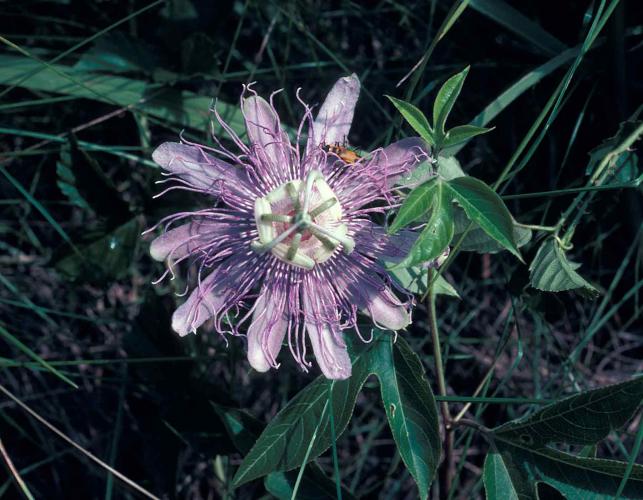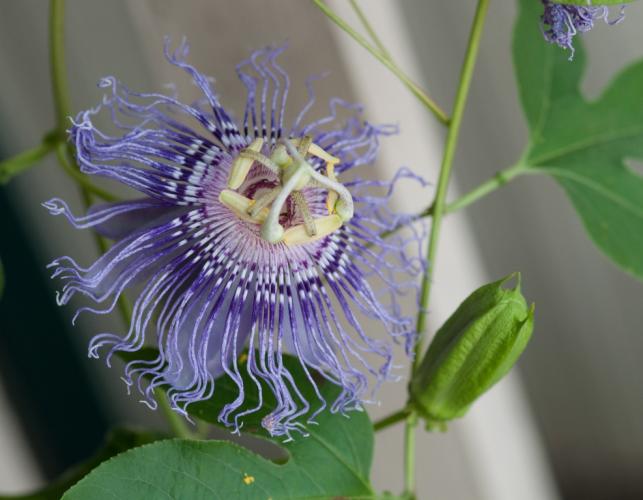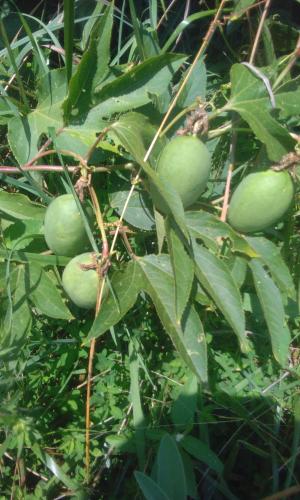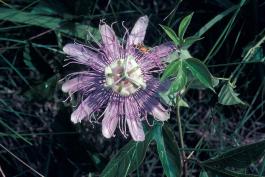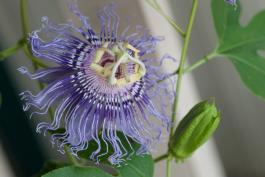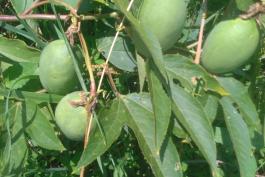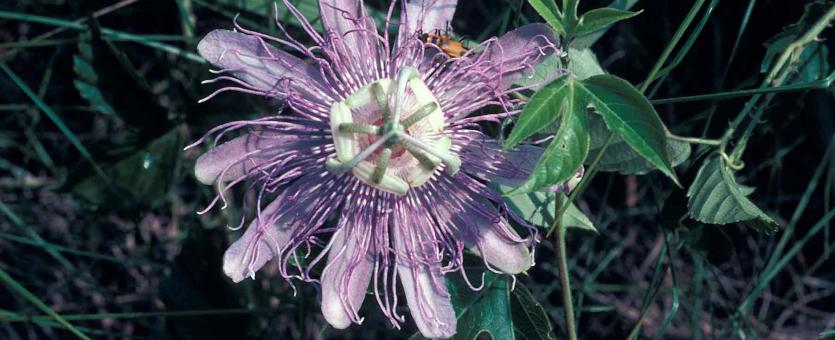
Herbaceous perennial vine, sprawling or climbing by tendrils. The unique, elaborate flowers arise singly from axils, the floral parts purplish blue, pink, and white, fringed. Blooms June–September. Leaves alternate, deeply 3- or occasionally 5-lobed, on stalks up to 3 inches long. Two small glands are located near the top of the leaf stalk. Fruit fleshy, egg-shaped or nearly spherical, up to 2 inches long, green, becoming yellow at maturity, edible with a sweet pulp similar to citrus.
Height: vine climbing 6–8 feet; spread: 3–6 feet.
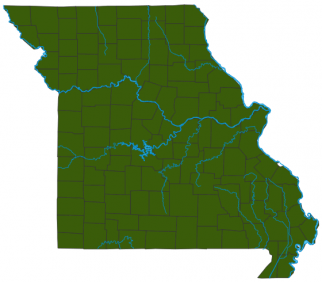
Mostly south of Missouri River; although cultivated potentially statewide, it is native only in southern Missouri.
Habitat and Conservation
Occurs in sandy fields, fencerows, low alluvial ground, waste areas, roadsides, and railroads. Cultivated statewide. A relative of the tropical passion fruit, this species is native to the southeastern United States, including southern Missouri. For its genus, this species is relatively hardy, but individuals may not survive Missouri's coldest winters. It reseeds readily, however.
Status
The genus name, Passiflora, is applied to this group of plants because of their unusual flowers. Apparently, Spanish explorers fancifully associated the floral structures with the story of Christ's crucifixion—the fringe representing the crown of thorns, and so on. The species name, incarnata, means "in the flesh" or "incarnate." The common name "maypops" refers to the fruits, which in the South ripen in May and pop when crushed.
Human Connections
A fascinating native vine for landscaping. The bizarre flowers attract attention—and butterflies. Ripe fruits are edible raw or made into jellies. The vine climbs via tendrils. The roots can spread aggressively, but in our zone the vines die back to the ground in winter.
Ecosystem Connections
Passion flowers are food plants for larval Gulf and variegated fritillary butterflies. The flowers require cross-pollination in order for their seeds to be viable, and bumblebees and carpenter bees are some of the pollinators.
